Scroll to:
Design of Instrumentation and Control Components of Power Distribution Systems
https://doi.org/10.23947/2687-1653-2024-24-1-88-97
EDN: RZSDQA
Abstract
Introduction. In recent years, the development of high-voltage power systems has received a boost due to the need for infrastructural support for priority development areas. Universal models and algorithms are required to implement processes in power components and identify their optimal parameters. However, there are no such solutions. Accordingly, there are no ready-made subsystems with control and optimization algorithms adequate to the tasks under consideration. The objective of the presented research is to develop an optimization subsystem for the design of control and measurement components of power distribution systems.
Materials and Methods. Methods for constructing automated design systems, optimization, system analysis, mathematical modeling, and adaptive control were used. When selecting methods, we proceeded from the fact that the components of power distribution systems consisted of a finite number of elements. The synthesis of a power system includes tens or hundreds of sequential operations. This was taken into account in the developed models and algorithms.
Results. The possibilities of managing and monitoring manufacturing processes (MP) for the production of components of low-voltage power distribution systems were shown in terms of checking the operability and correct functioning of processing equipment. A modular structure was created to allow the integration of CAD output files into the manufacturing processes of energy distribution system components. A functional diagram of a subsystem for control and monitoring of the manufacturing processes of the production of components of power distribution systems was developed. The proposed schematic diagram of production control showed how the data collection subsystem, management system, and operating mechanisms were involved in the control of operations. The multi-level optimization module model created within the framework of this research sequentially optimized the service intensity of the i-th block, the input flow separation coefficients, and the priorities of the original data flows that form the input flow of the i-th block.
Discussion and Conclusion. The combined application of modeling, system analysis, and optimization methods maintains control of the accuracy of the generated power components. The algorithm for controlling electrical loads opens up opportunities for creating a mathematical model of a power supply system that combines management, control, and monitoring, which ultimately leads to an improvement in the quality of electric power. The solution can be in demand in the development of power systems of priority development areas.
Keywords
For citations:
Klimenko Yu.A., Lvovich Ya.E., Preobrazhensky A.P. Design of Instrumentation and Control Components of Power Distribution Systems. Advanced Engineering Research (Rostov-on-Don). 2024;24(1):88-97. https://doi.org/10.23947/2687-1653-2024-24-1-88-97. EDN: RZSDQA
Introduction. The creation and development of power distribution systems with the required parameters is an important science and technology task. Active theoretical and applied developments are underway in the high-voltage energy area. In recent years, priority development areas have been formed and developing in Russia. These are production clusters that need to be provided with high-quality infrastructure, including energy infrastructure. In most cases, we are talking about small settlements that initially lag behind in economic, social and infrastructural terms. The solution of power problems under such conditions should be facilitated by the use of universal models and algorithms that will, in particular, identify the optimal parameters of the components of power processes. Such solutions are not presented in the literature. Accordingly, there are no management and optimization subsystems developed on their basis.
The high cost of modern power equipment should be noted. Its effectiveness assumes that the setting provides optimal parameters for the operation of the components. When designing monitoring-and-measuring components of power distribution systems, it is important to specify control and tolerance points regarding the quality parameters of the corresponding process steps [1]. During production, processing sequence should be determined.
Let us consider the last situation, i.e., production, in greater detail. A large number of process steps can create difficulties associated with control and management [2]. Therefore, when releasing components of power equipment, it is important to specify the requirements for the subsystem of control and optimization of manufacturing processes (MP). Such a subsystem is used in the manufacture of prototypes. Another recommended approach is the examination of power modules. It provides determining adequate output parameters. It is also important to take into account the influence of external actions [3].
The selection of algorithms should be based on the methods of mathematical statistics. This makes it possible to control and optimize the quality parameters of processes and use appropriate management procedures [4]. Versatility should be noted as an advantage of the algorithms. By the provision of it, within the framework of a systematic approach, it is possible to plan and implement research in this direction [5]. It is known that the start of manufacturing new power equipment is not always provided with the required statistical data. In this case, it makes sense to apply adaptive management methods. Self-optimization procedures are convenient to use when there are changes in the requirements for MP, as well as when external conditions vary [6]. The objective of the presented research is to create an optimization subsystem in the design of monitoring-and-measuring components of power distribution systems.
Materials and Methods. Methods of creating automated systems for design, optimization, system analysis, mathematical modeling, and adaptive management are used. When selecting methods, it was taken into account that the components of power distribution systems consist of a finite number of elements. In more detail, the task can be presented as follows. It is planned to produce equipment components for power distribution systems. It is required to create a subsystem that will manage and optimize engineering MP. The analysis provides selecting and using the adaptive control method of such a subsystem [7].
The synthesis of the entire power system involves dozens or hundreds of sequential operations, and this is taken into account in modeling and algorithmization.
In the production of components of power complexes, it is proposed to use simulation modeling based on the MP optimization module [8]. At the same time, the quality of the components is considered in relation to the parameters of the created power distribution system. Uncontrolled MP parameters can also be taken into account.
Figure 1 shows the integration of computer-aided design (CAD) output files into the production of components of power distribution systems in the form of modules.
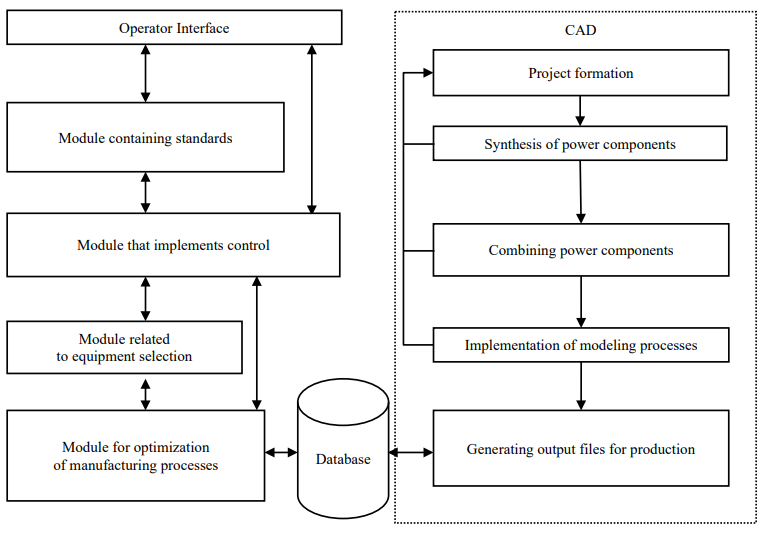
Fig. 1. Modular structure of integration of CAD output files and production of components of power distribution systems
The control module provides transmitting the process data to an automated control system (ACS) [9]. During the MP, operators receive data on the reliability of the power components being created. At the same time, the results of the physicotechnical expertise are taken into account, and the optimization module is used. The impact of various factors on the efficiency of power equipment is monitored. The data on previously manufactured components are analyzed. In further developments, the proposed module will make it possible to save and take into account several types of hardware settings. They can be used in production to determine tolerance ranges for each process step [10].
The ACS should include four modules.
- Subsystem of interoperative control support.
- Transport operations management module.
- Subsystem for managing MP modes.
- Subsystem of process steps management.
Such ACS translates information from designers to production. In practice, various quality management systems are used for the components of power distribution systems being created, including those with production control subsystems [11].
In this paper, an automated subsystem for control and optimization of monitoring-and-measuring components of power complexes is proposed. It provides different types of impacts on MP for any stage of production. The previously obtained data allow the subsystem to reduce the number of defective elements, i.e., to improve the quality of products.
Figure 2 illustrates the structure of this subsystem. It was formed on the basis of the requirements for the efficiency of production processes. In addition, different types of components being formed were taken into account. Previously used values of MP parameters can be applied for analysis. The operator has the opportunity to change them.
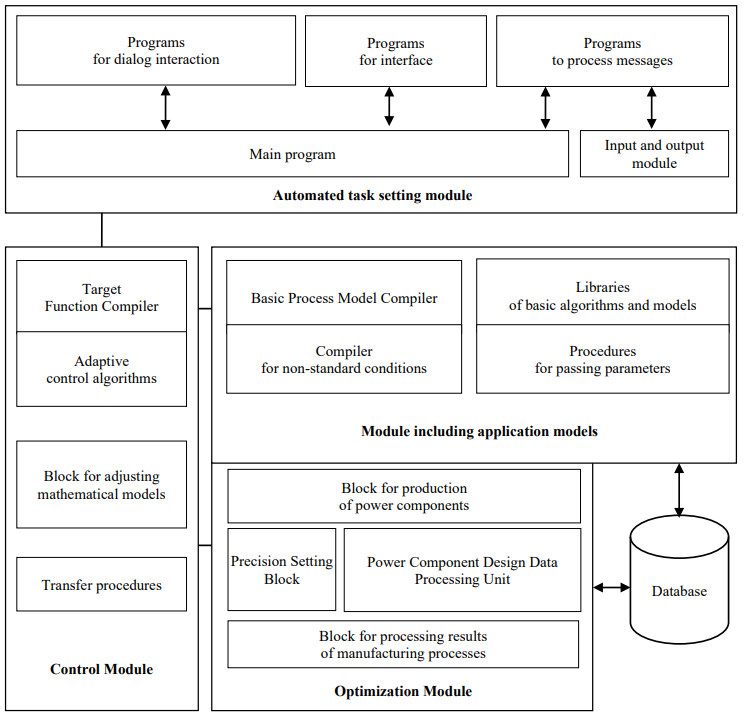
Fig. 2. Functional diagram of subsystem for management and control of MP components of power distribution systems
The main program is considered as the basis of the automated task module, and for the processes of setting up and transferring MP parameters. An analysis is carried out to identify the need to adjust equipment settings. A special role is played by programs for processing messages and supporting dialog interaction. They make it possible to adjust the MP manually. The operator has the ability to download current settings from the database. They are set manually or through an input and output module.
The optimization module generates a list of top-level management operations for a specific MP. Then, the operations are analyzed, the optimization accuracy and production parameters are set. According to the information received, the application models are transferred to the module. At the same time, analytical and statistical models of basic MP operations are used. For each such operation, the input and output parameters are determined in the corresponding part of the system.
The control module develops and refines the mathematical model of production processes [12]. It is then used to determine the tolerance for quality parameters within the framework of individual process steps. The model is developed in the module of applied models. The automated task module is designed for procedures to maximize the target function.
The received settings for equipment, management and process parameters are recorded in the database. Then, during the production of power components, the process is analyzed, and the current settings of the equipment elements are adjusted.
The study of MP management and control is required to verify the operability of processing equipment, the correctness of its operation and the organization of production.
Research Results. The monitoring-and-measuring components of power distribution systems consist of a finite number of elements. The component production involves dozens or hundreds of sequential operations and relies on solving the problem of forming components with maximum accuracy. At the same time, uncontrolled parameters should be taken into account for any step. For this purpose, correlation analysis, adaptive management, and optimization are used.
Particular models are combined into a general model for creating power components, which can be adjusted (e.g., with account of experimental testing of equipment or requirements for specific components). Some algorithms are created on the basis of the results of monitoring the formation of components and, as a result, provide improving the quality with changes in operating modes. The main indicators of the efficiency and stability of production can be considered the values of the output indicator of valid power components.
The following are three key features of managing the processes of component formation.
- It is important to maintain the specifications at the required levels for input and output components for different batches.
- Algorithms affect the shutdown of each processing step.
- Constant wear of equipment requires regular adjustment of process parameters.
We describe the model based on the MP of creating power components [13].
Suppose that the (i–1)-th operation of MP is being considered:
 (1)
(1)
Here, ui — quality parameter of the power components of the current operation; vi — production option.
It is important to take into account that in practice not the quality parameters of the power components are critical, but the design parameters that depend on them (e.g., highspeed response). Then:
 (2)
(2)
Here, gi — controlled parameters of the current operation; ki — design parameters.
The production of power components is described as a trajectory with a change of state. According to the final state, the adjustment of the MP is carried out. Within the framework of trajectory management, the corresponding tasks are solved. The optimal solution is selected from a variety of solutions [14]. At the same time, the specified characteristics of the generated power components are taken into account. In this case, the control actions should provide the best match of the required and output characteristics of the components being formed  Here, n — number of MP operations.
Here, n — number of MP operations.
The basic industrial technology determines the initial data, the processing sequence, and sets limits on control variables.
When selecting the number of MP operations (n–1), the target function is as follows:
 (3)
(3)
Here, с1…сn — selectable process control variables.
We introduce parameter ji, which characterizes the corresponding goals associated with the i-th operation. For (n–1) operations in MP, the following expression is valid:
 (4)
(4)
If there is one operation in the MP, then:
 (5)
(5)
Significantly,
 (6)
(6)
Under such conditions for MP, the target function is defined as follows:
 (7)
(7)
The schematic diagram in Figure 3 shows how the power components are generated. The MP data acquisition subsystem (sensor system and instrumentation) transmits the values of input and output parameters for each processing step n to the control system. This happens before and after each step n (n = 0,1,2, …, m). The values are recorded in the data collection subsystem.
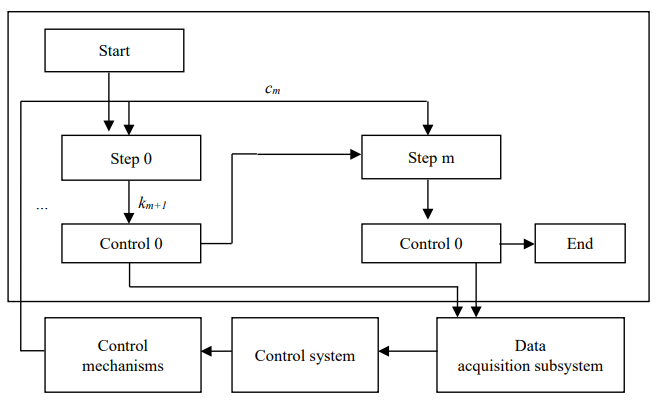
Fig. 3. Schematic diagram of control of production of power components
In total, m steps are considered. The work ends after performing m+1 steps.
The use of the optimization model makes it possible to form technologies for converting the input data flow (xвх). The main channels for processing input data are:
- process department (PD);
- production department (PRD), n= 1;
- N of structural subdivisions (SSn).
Figure 4 shows the block diagram of the transformation of the input data flow.
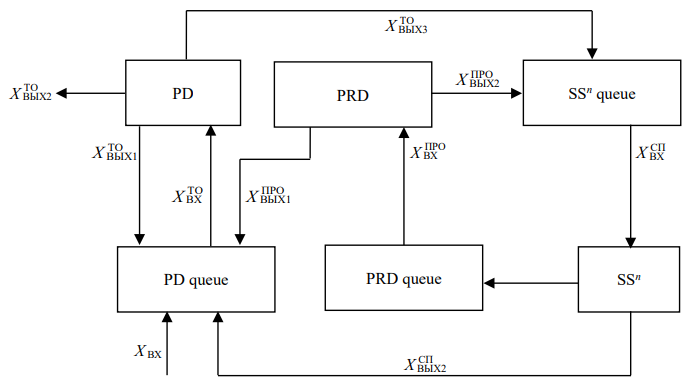
Fig. 4. Block diagram of data flow distribution in the optimization module

The scheme efficiency is determined by three factors.
- For all types of input data flows for any block in the system, the intensity and maintenance mechanisms are considered.
- Input flow for each block is divided into several output data flows.
- Depending on the level and priority, it is needed to observe the data queue in each block.
It is possible to analyze these processes using a multilevel optimization model (Fig. 5).
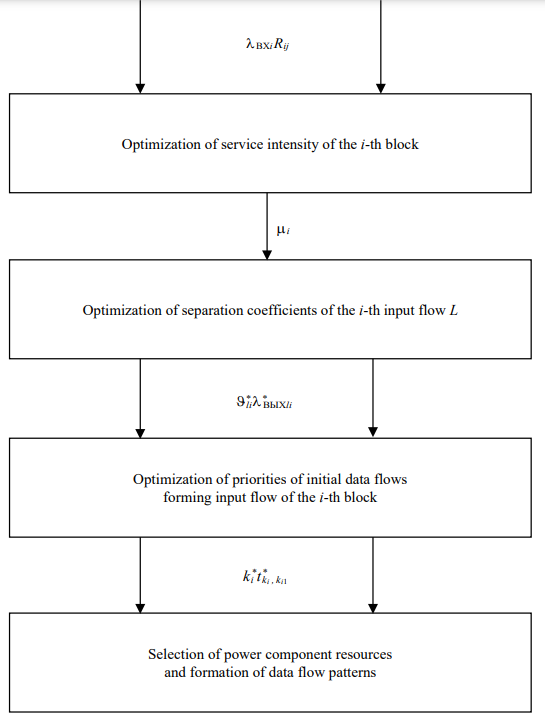
Fig. 5. Multilevel optimization model of the optimization module
Here, λВХi, i= — intensity of the input data flow associated with XВХi i-th block; i=
— intensity of the input data flow associated with XВХi i-th block; i= — block numbers for power components; Rij — guaranteed level for the j-th (
— block numbers for power components; Rij — guaranteed level for the j-th ( ) resource in the i-th block;
) resource in the i-th block;  — numbers related to resource provision; μi, — intensity of data management associated with the i-th block; μi — optimal intensity value; υli — data separation coefficient of the i-th flow to the 1st output;
— numbers related to resource provision; μi, — intensity of data management associated with the i-th block; μi — optimal intensity value; υli — data separation coefficient of the i-th flow to the 1st output;  — designation of numbers in output flows;
— designation of numbers in output flows; — optimal value in the separation coefficient;
— optimal value in the separation coefficient;  — values of the numbers of source data flows for the input flow in the i-th block; — numbers of the source flows that will show the optimal priorities;
— values of the numbers of source data flows for the input flow in the i-th block; — numbers of the source flows that will show the optimal priorities; — time of interruption of data ki management by data ki1 with mixed priorities;
— time of interruption of data ki management by data ki1 with mixed priorities;  — optimal time for interruption of data management by data ki1.
— optimal time for interruption of data management by data ki1.
The optimal pattern of priorities for the lower level is determined. The optimality problem is solved according to the Bellman principle, i.e., the optimality principle is proved to the contrary. It is accepted that part of the process is not optimal according to the quality criterion. The criteria of the initial and optimal processes are compared. Based on this comparison, a conclusion is drawn about the proof of the optimality principle [15]. The selection is made during the processing of different types of data according to optimal, absolute, and mixed priorities. The task scheduler can use various algorithms to make decisions about the order of tasks. In some cases, optimal priorities are useful, in others, absolute ones. Tasks with a higher priority are completed earlier, and, accordingly, the response to them is faster. When combining (mixing) priorities for individual applications, non-priority service is possible.
The optimal mechanism for dividing into several output flows at the middle level is selected by the input data flow for each block.
At the upper level, the following are selected:
- input flow balanced in intensity;
- resource provision of the module for optimizing the intensity of management for each block.
In this case, a gradient approach can be applied.
For energy components, a three-level parametric optimization is used in the selection of resources and the formation of data flow patterns for each block.
Discussion and Conclusion. A subsystem for the management and control of MP for the production of monitoring-and-measuring components of power distribution systems is created. It provides data collection and defect analysis depending on the hardware settings. In addition, the solution can obtain requirements for equipment settings to achieve a given level of component quality.
Optimization of the design is required, specifically, when modeling the control of electric loads to improve the quality parameters of electrical power in 0.4 kV power distribution networks. The algorithm of the electric load control process was studied in an adaptive system of control and management of the power quality [15]. Its operability has been confirmed; therefore, the solution can be used in the development of equipment for 0.4 kV distribution networks. In addition, this algorithm can be applied to develop a mathematical model of the power supply system, which is a set of functions: monitoring, management, control. The use of modeling, system analysis and optimization methods, maintains control of the accuracy of the generated power components. Adequate implementation of this approach can improve the quality of electric power.
The results of the presented research are practically applicable, in particular, for solving problems related to the power supply of the priority development areas.
References
1. Yizhou Zhou, Mohammad Shahidehpour, Zhinong Wei, Zhiyi Li, Guoqiang Sun, Sheng Chen. Distributionally Robust Unit Commitment in Coordinated Electricity and District Heating Networks. IEEE Transactions on Power Systems. 2020;35(3):2155–2166. https://doi.org/10.1109/TPWRS.2019.2950987
2. Hechuan Liu, Xiaoxin Zhou, Xiaoyu Yang, Yalou Li, Xiong Li. Influence Evaluation of Integrated Energy System on the Unit Commitment in Power System. IEEE Access. 2020;8:163344–163356. URL: https://ieeexplore.ieee.org/stamp/stamp.jsp?arnumber=9181509 (accessed: 25.11.2023).
3. Rakipour D, Barati H. Probabilistic Optimization in Operation of Energy Hub with Participation of Renewable Energy Resources and Demand Response. Energy. 2019;173:384–399. https://doi.org/10.1016/j.energy.2019.02.021
4. Farahani SS, Bleeker C, Wijk A, Lukszo Z. Hydrogen-Based Integrated Energy and Mobility System for a Real-Life Office Environment. Applied Energy. 2020;264:114695. https://doi.org/10.1016/j.apenergy.2020.114695
5. Sadeghi H, Rashidinejad M, Moeini-Aghtaie M, Abdollahi A. The Energy Hub: An Extensive Survey on the State-of-the-Art. Applied Thermal Engineering. 2019;161:114071. https://doi.org/10.1016/j.applthermaleng.2019.114071
6. Junkai Liang, Wenyuan Tang. Interval Based Transmission Contingency-Constrained Unit Commitment for Integrated Energy Systems with High Renewable Penetration. International Journal of Electrical Power & Energy Systems. 2020;119:105853. http://doi.org/10.1016/j.ijepes.2020.105853
7. Klimenko YuA, Preobrazhensky AP. Simulation of the Control Process Electric Loads in the Distribution Network of 0.4 kv. Control Systems and Information Technologies. 2021;86(4):95–100. https://doi.org/10.36622/VSTU.2021.86.4.020
8. Alqunun K, Guesmi T, Albaker AF, Alturki MT. Stochastic Unit Commitment Problem, Incorporating Wind Power and an Energy Storage System. Sustainability. 2020;2(23):10100. https://doi.org/10.3390/su122310100
9. Shuai Lu, Wei Gu, Ke Meng, Zhaoyang Dong. Economic Dispatch of Integrated Energy Systems with Robust Thermal Comfort Management. IEEE Transactions on Sustainable Energy. 2021;12(1):222–233. https://doi.org/10.1109/TSTE.2020.2989793
10. Voropai NI, Stennikov VA, Barakhtenko EA, Voitov ON. Methodology of Demand Management of Electricity and Heat in an Integrated Energy System with Active Consumers. Proceedings of the RAS. Power Engineering. 2020;4:11–23. https://doi.org/10.31857/S0002331020040081
About the Authors
Yu. A. KlimenkoRussian Federation
Yuri A. Klimenko, Postgraduate student of the Information Systems and Technologies Department
73-A, Lenin St., Voronezh, 394043
Ya. E. Lvovich
Russian Federation
Yakov E. Lvovich, Dr.Sci. (Eng.), Professor of the Information Systems and Technologies Department
73-A, Lenin St., Voronezh, 394043
A. P. Preobrazhensky
Russian Federation
Andrey P. Preobrazhensky, Dr.Sci. (Eng.), Professor of the Information Systems and Technologies Department
73-A, Lenin St., Voronezh, 394043
Review
For citations:
Klimenko Yu.A., Lvovich Ya.E., Preobrazhensky A.P. Design of Instrumentation and Control Components of Power Distribution Systems. Advanced Engineering Research (Rostov-on-Don). 2024;24(1):88-97. https://doi.org/10.23947/2687-1653-2024-24-1-88-97. EDN: RZSDQA












































